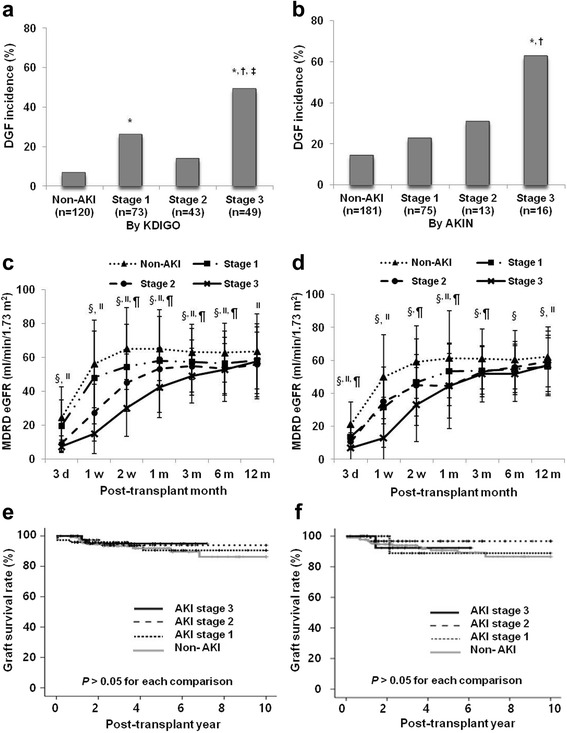Fig. 6.

Clinical outcomes of kidney transplant recipients according to the AKI stage by either the KDIGO or AKIN criteria in corresponding donors. The incidence of DGF was highest in stage 3 AKI by either the (a) KDIGO or (b) AKIN criteria. The changing patterns of allograft function in each AKI stage group according to the AKI stage in corresponding donors by the (c) KDIGO or (d) AKIN criteria. Please note that allograft function was lowest in the stage 3 AKI group and highest in the non-AKI group in both analyses by 6 months after KT. But these differences disappeared at 1 year from KT. The allograft survival rate in each AKI stage group according to the AKI stage in corresponding donors by the (e) KDIGO or (f) AKIN criteria. Please note that there was no significant difference in long term allograft survival rate among each AKI stage group in both analyses. MDRD, the modification of diet in renal disease; eGFR, estimated glomerular filtration rate; DGF, delayed graft function; AKI, acute kidney injury; KDIGO, kidney disease: improving global outcome; AKIN, acute kidney injury network; d, day; m, month. * P <0.05 compared with non-AKI, † P < 0.05 compared with AKI stage 1, ‡ P <0.05 compared with non-AKI, § P <0.05 AKI stage 1 compared with non-AKI, II P <0.05 AKI stage 3 compared with non-AKI, ¶ P <0.05 AKI stage 3 compared with non-AKI
